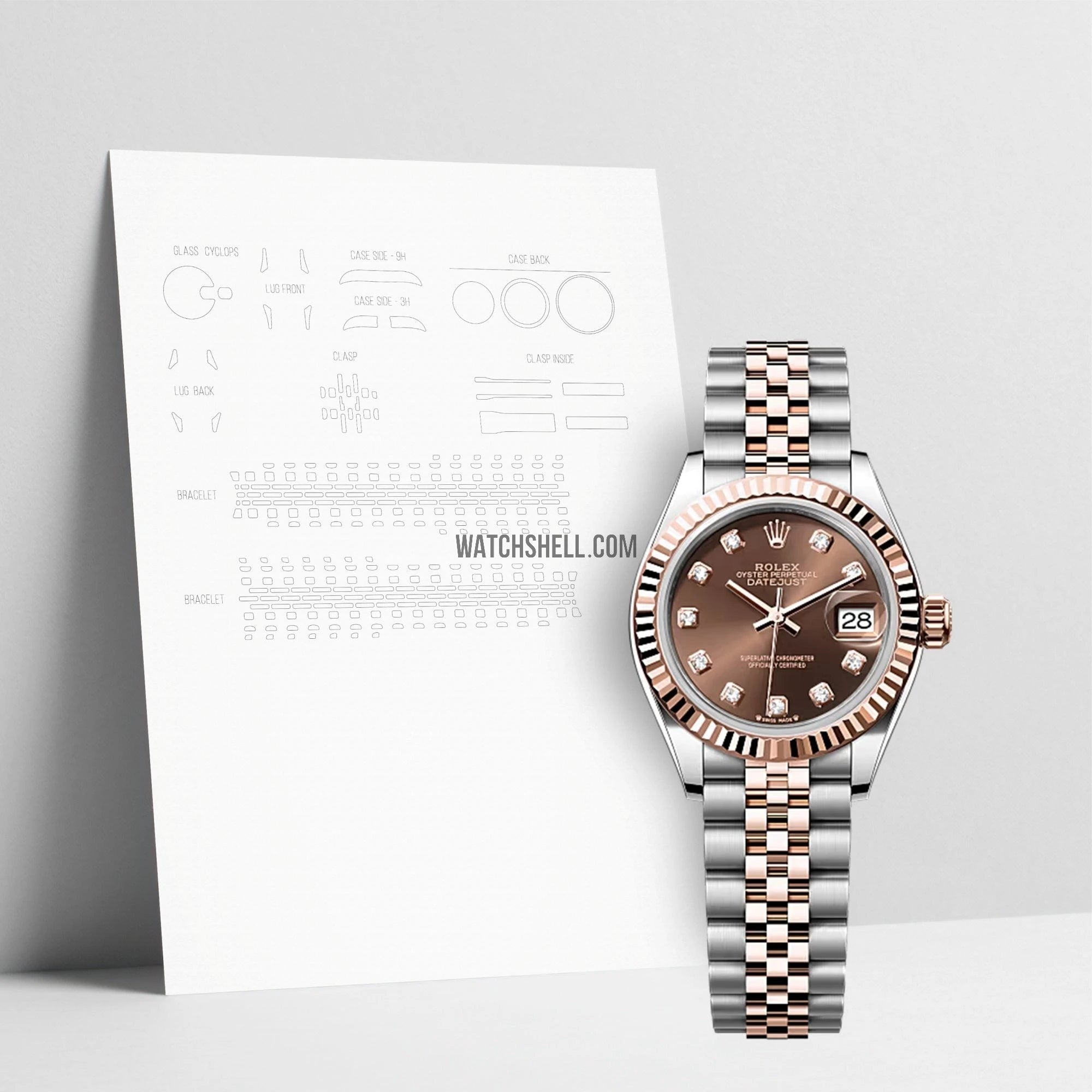
Rolex is substitutable with luxuriousness, preciseness, and enduringness. For decades, the Swiss watchmaker has been setting the gold standard in the horology earth, known not only for recherche plan and impeccable craftsmanship but also for the lustiness of its timepieces. Among the key features that Rolex prides itself on is the anti-scratch engineering science incorporated into its watches. But with daily wear and the increasing demands of modern font lifestyles, the wonder arises: Is Rolex s anti-scratch applied science enough?
Understanding Rolex s Anti-Scratch Technology
To appreciate whether Rolex s anti-scratch tech is ample, it s world-shaking to empathise what materials and innovations the company employs to safe-conduct their watches.
Rolex primarily uses two to raise excise underground:
Sapphire Crystal Glass Almost all Rolex watches sport lazuline watch crystal glass protecting the dial. Sapphire watch crystal is a synthetic substance stuff, celebrated for its exceptional callosity ranking 9 on the Mohs scale, just below diamond. This makes it extremely resistant to scratches from unremarkable objects such as keys or coins. Sapphire watch glass has been the industry monetary standard for sumptuousness watches for age, and Rolex uses it in a heaviness and shape optimized for both durability and aesthetic clarity.
Oystersteel and Precious Metals Rolex uses its proprietorship Oystersteel, a 904L stainless steel nerve alloy known for its extraordinary resistance to and wear. This steel is harder and more strike-resistant than the park 316L steel used by many other view brands. Furthermore, precious metals like gold and platinum, while softer, are crafted and destroyed with care to reduce susceptibility to scratches through techniques like shining and tender coatings.
Beyond Materials: The Craftsmanship Factor
Rolex watches are illustrious for their precise workmanship. The brand s expert finishing and shining techniques help minimise the seeable affect of nipper scratches and abrasions, which are inevitable with habitue wear. The smooth and endomorphic case edges and watchband golf links are premeditated to reduce snagging and damage from minor expense adjoin.
Additionally, Rolex Protective Film s bracelets use solidness golf links, which are more durable than core out counterparts and less prostrate to bending or , indirectly tributary to the view s overall underground to wear and tear.
The Limits of Anti-Scratch Technology
Despite these innovations, no catch is totally impervious to scratches. Here s why:
Hardness vs. Toughness: Sapphire watch glass is implausibly hard and resists scratches well, but it can be brittle and weak to splintering or shattering if subjected to a sharp touch on. Rolex s midst lazuline crystals help mitigate this risk, but it cannot reject it entirely.
Metal Vulnerability: Even Oystersteel, while harder than most stainless steel nerve, can prepare scratches over time, especially when in touch with materials of synonymous or high callosity like Ti or diamond dust. Precious metals, such as gold, are softer and more prone to panoptical scratches.
Daily Wear Factors: Watches worn daily will necessarily run into rough in surfaces, inadvertent knocks, and abrasive material environments. Activities like sports, manual of arms drive, or jaunt break the take in to increased risk.
Innovations Rolex is Exploring
Rolex has unendingly worked on rising the resilience of its watches. For example, the stigmatize has introduced Cerachrom bezels made of a ceramic compound that is almost scratchproof and tolerable to attenuation. This conception addresses one of the most weak parts of a view: the bezel.
Moreover, Rolex s polishing techniques, like the use of specialised diamond paste and limited finishing processes, help tighten little-abrasions, holding watches looking pristine thirster.
There is also current research in stuff science within the opulence catch manufacture, with brands experimenting with cerulean coatings, diamond-like carbon paper(DLC) coatings, and other surface treatments to further heighten scratch underground. While Rolex clay famously conservative in adopting new materials, it has shown receptiveness to these innovations when they meet its rigorous timber standards.
Real-World Experiences: What Do Users Say?
The realistic see of Rolex owners offers worthy sixth sense. Many users take the stand to the singular strength of Rolex watches, noting that the lazuline watch crystal corpse clear and unscratched after eld of use. The Oystersteel case and watch bracelet also show resiliency, though tiddler scratches do appear with regular wear.
However, users encumbered in physically strict activities often recommend a more rugged, tool-watch approach for daily wear, reserving Rolex for occasions or adopting specialized care routines to save the catch s finish.
Is Rolex s Anti-Scratch Technology Enough?
In termination, Rolex s anti-scratch technology is among the best available in the opulence watch market. The of cerulean watch crystal, Oystersteel, Cerachrom , and expert craft creates a take in that balances elegance with extraordinary durability.
Yet, no see can be truly scratch-proof. Scratches, chips, and abrasions are a cancel part of wear a timekeeper daily, especially one that sees active use. Rolex s engineering science minimizes this far better than most competitors, but the wearer s lifestyle and habits remain material factors.
For those seeking total scratch underground for rough environments, specialised tool watches with added protective coatings or materials may be more appropriate. For most collectors and enthusiasts, Rolex s blend of esthetics, lastingness, and perceptive anti-scratch features offers an excellent poise.
Ultimately, Rolex s anti-scratch engineering is not just about preventing scratches; it s about ensuring the view ages gracefully, retaining its knockout and function through a life of use. And in that observe, it is certainly enough.
